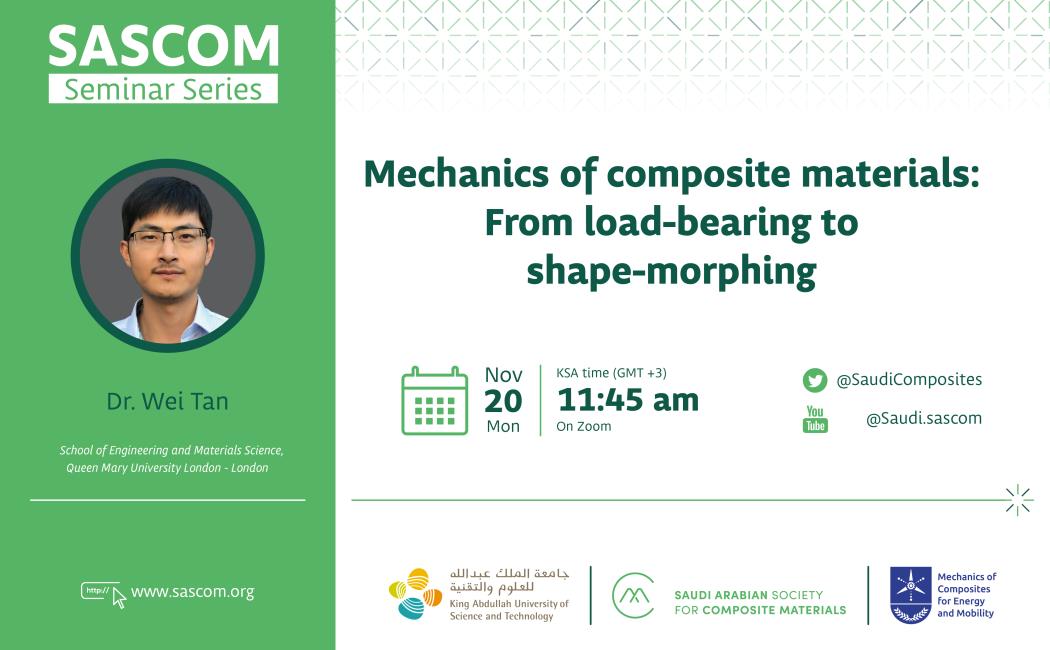


22 October, 2023
Monday, Nov 20, 2023
11:45 KSA time (GMT +3)
Mechanics of composite materials: From load-bearing to shape-morphing
By Dr. Wei Tan
Senior Lecturer at Queen Mary University of London.
Abstract
Nowadays, composite materials are increasingly being employed across various sectors, including transportation, energy, and healthcare. Due to their diverse microstructures and properties, they hold great promise for future load-bearing components and adaptable structures, ranging from aircraft drag control systems to deployable space structures and flexible electronics. One of the key challenges in advancing these new composite structures lies in comprehending how the microstructures of the materials influence their overall mechanical behaviour.
To tackle this challenge, significant strides in developing new theories and multiscale models for composite materials are imperative. In this work, a bottom-up numerical framework combining phase-field fracture model, moisture diffusion, and hygroscopic expansion is proposed to predict the environment-assisted failure of composite materials. The coupled phase field fracture method successfully captures moisture distribution, swelling of fibre and matrix, and fibre-matrix debonding. This computational framework enables a virtual tool to investigate the role of the microstructure, material properties, and environmental effects.
Following this, I will introduce an innovative top-down inverse-design framework for morphing structures utilizing functionally graded composites. By leveraging non-linear beam buckling theory and composite micromechanics, we can transform flat 2D sheets (with cuts) into desired 3D axisymmetric structures. We have proposed a voxel-based method for manufacturing Functionally Graded Composites (FGC). This stands in contrast to traditional single-phase homogeneous materials, enabling us to meet specific morphing requirements and enable multifunctionality. Overall, our multiscale virtual test platform opens a new avenue to the efficient design, testing, and certification of future composite structures.